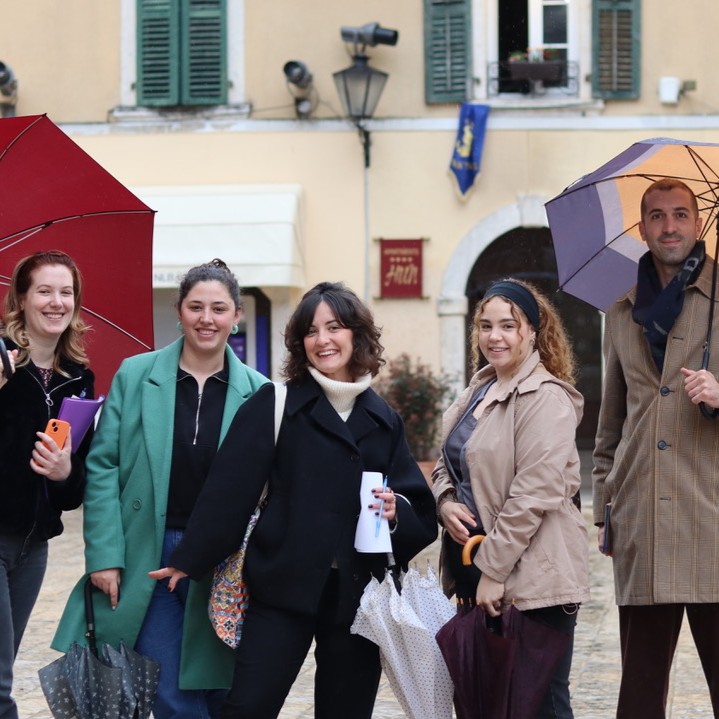Imagine interpreting phenomena you’ve passed by your entire life without ever acknowledging their value or significance.
The main task throughout the IE Certified Interpretive Planner (CIP) course held in Kotor during the last week of March tested participants to do just that.
The course was run as part of the UNESCO project Learning Landscapes with the aim of fostering landscapes in active learning and engagement. The Natural and Culturo-Historical Region of Kotor, as the property with stunning universal value, is a pilot project which will have to obtain the integral Strategy of heritage interpretation in the next few months.
The MPI “Museums” Kotor, on the side of the Municipality, took a part in its implementation, delegating two agents, Mileva Mršić and Jelena Čečur. Their task will be to consider the architectural quality of this property, including its fortified and open cities, settlements, palaces, and monastic complexes, which are in harmony with the surrounding natural environment. They will also have to take into account when developing the Strategy, the unique testimony to the Bay’s historical role in the transmission of Mediterranean cultures into the Balkans over the centuries.
The course, run as a partnership between Interpret Europe and the UNESCO Regional Office of Science and Culture, gathered 17 participants from different fields of expertise. Over the course of five intensive days of educational, interactive, and hands-on sessions, we developed and enhanced our skills in presenting and communicating the value of our cultural and natural heritage through various methods and techniques of heritage interpretation.
The main square in Kotor, the Square of Arms, served as the central point of our exploration. Although it represents just a small section of the UNESCO-protected area, this space offered a rich setting for examining various heritage-related phenomena. We explored the key stages of heritage interpretation, learning how to assess its value and how to present it in ways that are engaging and meaningful for both visitors and the local community.
This course contributed to our understanding from multiple perspectives. Given the diverse professional backgrounds of the participants, we gained valuable insight into the importance of both cultural and natural heritage, and how the method of interpretation significantly influences its recognition and appreciation. Considering that the workshop focused on universal values and involved the exchange of diverse experiences applicable in numerous ways to heritage interpretation, with an emphasis on innovation, sustainability, and universality, this experience is undoubtedly significant for the personal development of participants.
Visiting the site of this square multiple times and observing it from a completely different perspective proved that everything depends on the angle of perception and the way a particular phenomenon is presented to its audience. The education served as an introduction to the broader challenges that lie ahead: raising awareness of the significance of the environment we inhabit, addressing the continuous and alarming degradation of this heritage, and recognising the urgent need for actions aimed at its preservation and meaningful interpretation.
Using the interpretation of the main square as a case study, and guided by the overall goals of the course, we were challenged to create an interpretation plan for a specific site of our choice within Kotor’s UNESCO-protected area. This task will allow us to apply what we’ve learned, combining the theory and practice through thoughtful engagement with the cultural and natural layers of the place.
Milica Kašćelan is a master’s student in Journalism at the Faculty of Political Science, University of Montenegro. She is currently an intern at the MPI “Museums” Kotor. She can be contacted at: milica.kascelan@gmail.com.
Jelena Čečur holds an MSc in International Relations. She has worked for ten years as a documentarist and archivist at MPI “Museums” Kotor. Her research focuses on the history of the Bay of Kotor, presenting the cultural heritage of Perast through exhibitions and articles. She can be contacted at: jelena.cecur@muzejikotor.me.
To cite this article: Kašćelan, Milica & Čečur, Jelena (2025) ‘Layers of meaning: A journey through Kotor’s living heritage‘ in Interpret Europe Newsletter 1-2025, pg. 15.
Available online: PDF Newsletter Spring 2025


